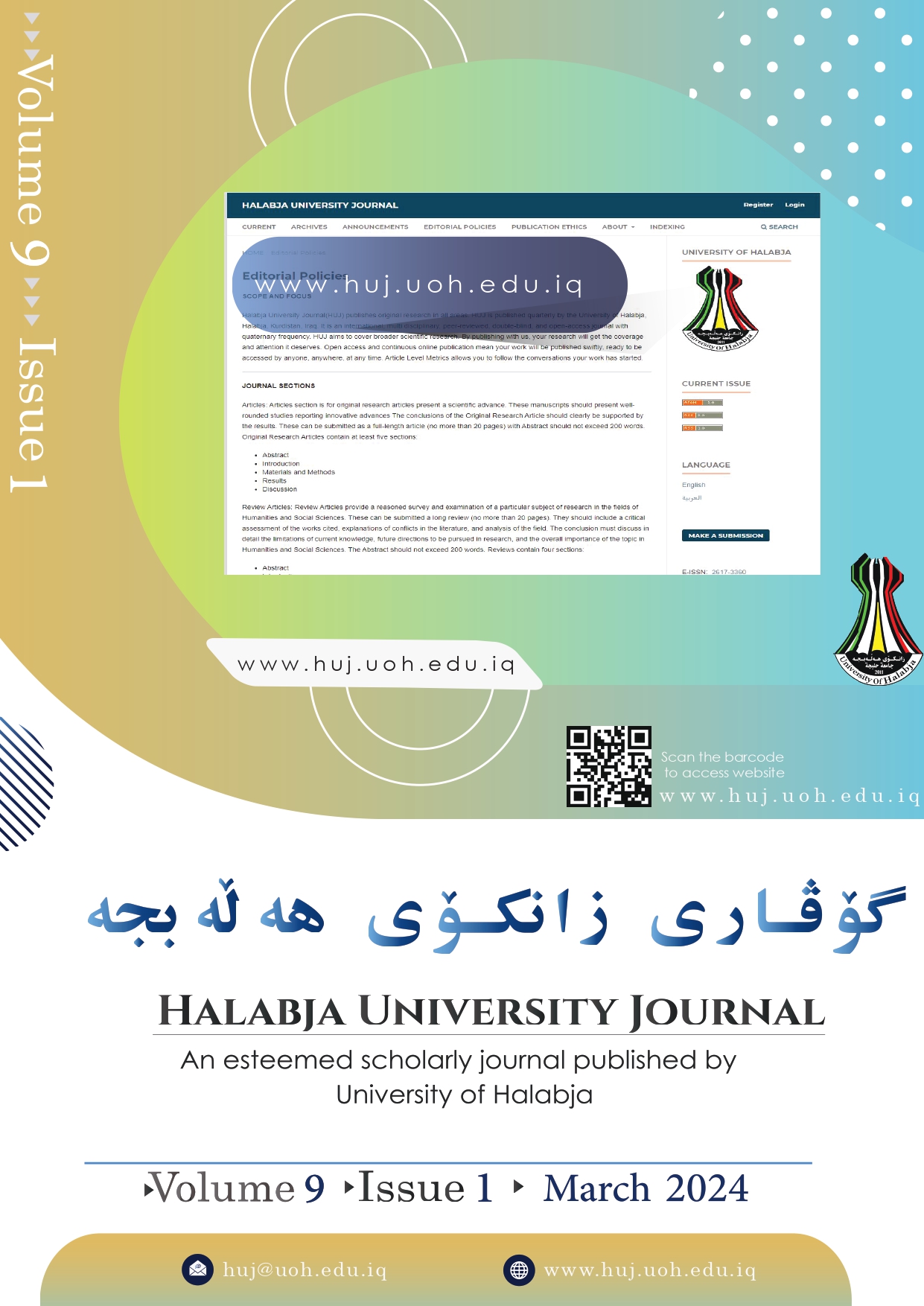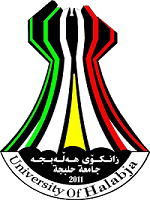Analyzing Metadiscourse in Kurdish University Students’ EFL Writing
DOI:
https://doi.org/10.32410/huj-10511Keywords:
Metadiscourse features, Textual Markers, Interpersonal Markers, Argumentative Essays, EFL StudentsAbstract
Metadiscourse markers are essential features of academic writing used to achieve certain discoursal purposes, such as holding the text together, marking the writer’s stances, and interacting with the audience. Different types of metadiscourse are employed to perform various functions in a given text, but they are mainly divided into two major categories of ‘textual’ and ‘interpersonal’ based on their main uses. With reference to the significance of this textual feature, the present study was conducted to investigate metadiscourse markers found in argumentative essays written by Kurdish university EFL students. The study was restricted to 30 advanced senior students of the English Department at the University of Basic Education, Salahaddin University-Erbil. After assigning the writing task to the students, the essays were collected and analyzed according to the corpus linguistics methodology. That is, quantitative analyses and correlational statistics were performed on the linguistic data. The study discovered that Kurdish EFL students are exceptionally good at using metadiscourse in terms of quantity and quality. Nevertheless, the students showed poor competency with regard to overusing metadiscourse markers.
References
Baker, P. (2010). Corpus Methods in Linguistics. In L. Litosseliti (ed.), Research Methods in Linguistics (pp. 93–113). London: Continuum.
Beauvais, P. (1989). A Speech-act Theory of Metadiscourse. Written Communication, 6(1), 11–30. DOI: https://doi.org/10.1177/0741088389006001002
Breyer, Y. A. (2011). Corpora in Language Teaching and Learning. Frankfurt: Peter Lang.
Bunton, D. (1998). The Use of Higher Level Metatext in PhD Theses. English for Specific Purposes, 18, S41–S56. DOI: https://doi.org/10.1016/S0889-4906(98)00022-2
Center for Advanced Research on Language Acquisition (CARLA), Activity 4: Complexity in oral vs. written language
Crismore, A. (1989). Talking with Readers: Metadiscourse as Rhetorical Act. New York: Peter Lang.
Crowhurst, M. (1990). Teaching and Learning the Writing of Persuasive/Argumentative Discourse. Canadian Journal of Education, 15(4), 348-359. DOI: https://doi.org/10.2307/1495109
Gholami, J., Nejad, S. R., & Pour, J. L. (2014). Metadiscourse Markers Misuses; a Study of EFL Learners’ Argumentative Essays. Procedia - Social and Behavioral Sciences 98, 580 – 589. https://doi.org/10.1016/j.sbspro.2014.03.454 DOI: https://doi.org/10.1016/j.sbspro.2014.03.454
Hyland, K. (1998). Persuasion and Context: The Pragmatics of Academic Metadiscourse. Journal of Pragmatics, 30, 437–455. DOI: https://doi.org/10.1016/S0378-2166(98)00009-5
Hyland, K. (1999). Talking to Students: Metadiscourse in Introductory Coursebooks. English for Specific Purposes, 18(1), 3-26. DOI: https://doi.org/10.1016/S0889-4906(97)00025-2
Hyland, K. (2000) Disciplinary Discourses: Social Interactions in Academic Writing. London: Longman.
Hyland, K. (2004) Disciplinary Interactions: Metadiscourse in L2 Postgraduate Writing. Journal of Second Language Writing, 13(2), 133–151. DOI: https://doi.org/10.1016/j.jslw.2004.02.001
Hyland, K., & Tse, P. (2004). Metadiscourse in Academic Writing: A Reappraisal. Applied Linguistics, 25(2), 156–177. DOI: https://doi.org/10.1093/applin/25.2.156
Intaraprawat, P., & Steffensen, M. S. (1995). The Use of Metadiscourse in Good and Poor ESL Essays. Journal of Second Language Writing, 4,253-272. DOI: https://doi.org/10.1016/1060-3743(95)90012-8
Mauranen, A. (1993). Contrastive ESP Rhetoric: Metatext in Finnish-English Economics Texts. English for Specific Purposes, 12, 3–22. DOI: https://doi.org/10.1016/0889-4906(93)90024-I
Schiffrin, D. (1980). Metatalk: Organisational and Evaluative Brackets in Discourse. Sociological Inquiry: Language and Social Interaction, 50, 199–236. DOI: https://doi.org/10.1111/j.1475-682X.1980.tb00021.x
Simin, S., & Tavangar, M. (2009). Metadiscourse Knowledge and Use in Iranian EFL Writing. Asian EFL Journal, 11(1), 230-255.
Valero-Garces, C. (1996). Contrastive ESP Rhetoric: Metatext in Spanish-English Economics Texts. English for Specific Purposes, 5(4), 279–294. DOI: https://doi.org/10.1016/S0889-4906(96)00013-0
Downloads
Published
Issue
Section
License
Copyright (c) 2024 Kawa Qadir Muhammad, Himdad Abdul-Qahar Muhammad

This work is licensed under a Creative Commons Attribution-NonCommercial-NoDerivatives 4.0 International License.
Authors who publish with this journal agree to the following terms:
- Authors retain copyright and grant the journal right of first publication with the work simultaneously licensed under a Creative Commons Attribution License [CC BY-NC-ND 4.0] that allows others to share the work with an acknowledgment of the work's authorship and initial publication in this journal.
- Authors are able to enter into separate, additional contractual arrangements for the non-exclusive distribution of the journal's published version of the work (e.g., post it to an institutional repository or publish it in a book), with an acknowledgment of its initial publication in this journal.
- Authors are permitted and encouraged to post their work online (e.g., in institutional repositories or on their website) prior to and during the submission process, as it can lead to productive exchanges, as well as earlier and greater citation of published work (See The Effect of Open Access).






